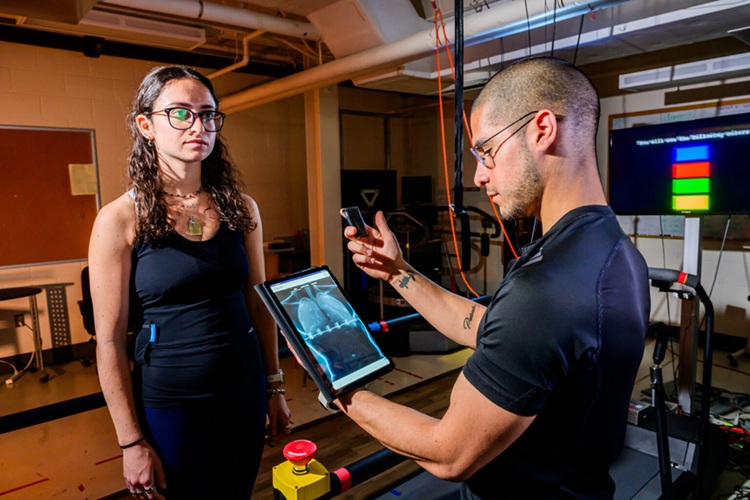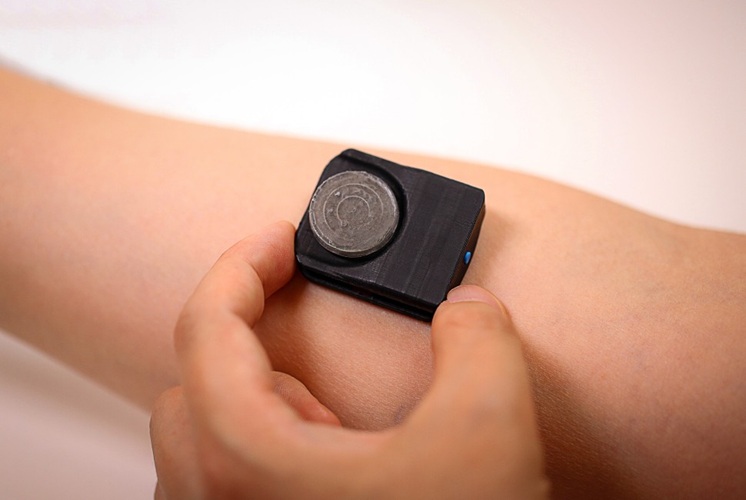PSA Can Help Identify Cancer Following Surgery for Benign Prostatic Hyperplasia
|
By HospiMedica International staff writers Posted on 09 Jul 2009 |
Men undergoing surgical interventions for benign prostatic hyperplasia (BPH) are still at risk for subsequent development of prostate cancer due to residual tissue, claims a new study.
Researchers at Northwestern University (Chicago, IL, USA) conducted a retrospective review of 525 patients who had undergone one of three procedures for BPH: transurethral resection of the prostate (TURP; 343 patients), holmium laser resection of the prostate (HoLRP; 54 patients), or open prostatectomy (OP; 68 patients), between 1992 and 2007. The prostate-specific antigen (PSA) and PSA velocity values were collected at regular intervals both pre- and postoperatively for all patients, since the researchers hypothesized that the PSA level might be influenced by the efficacies of different BPH procedures. Only patients with histologic BPH and those with incidental prostate cancer who underwent a watchful waiting strategy were included.
The researchers found that the average preoperative PSA values were significantly different between the TURP, HoLRP, and OP groups. Only one patient had incidental prostate cancer in the HoLRP group. No differences were present between the preoperative PSA values for patients with histologic BPH and those with incidental prostate cancer undergoing a watchful waiting strategy. However, the postoperative PSA values were increased in the patients with prostate cancer; similarly, patients with incidental prostate cancer had a significantly elevated postoperative mean PSA velocity compared with patients without prostate cancer. The researchers therefore concluded that postoperative PSA and PSA velocity measurements could be used to distinguish patients with prostate cancer from those with histologic BPH only. The study was published ahead of print on May 8, 2009, in the online edition of Urology.
Prostatic adenoma inevitably remains after BPH surgery, and studies have determined that the level of PSA decreases by approximately 0.1-0.3 ng/ml for every gram of prostate tissue removed. Therefore, PSA levels should indicate residual hyperplastic tissue, as well as resulting cancer risk.
Related Links:
Northwestern University
Researchers at Northwestern University (Chicago, IL, USA) conducted a retrospective review of 525 patients who had undergone one of three procedures for BPH: transurethral resection of the prostate (TURP; 343 patients), holmium laser resection of the prostate (HoLRP; 54 patients), or open prostatectomy (OP; 68 patients), between 1992 and 2007. The prostate-specific antigen (PSA) and PSA velocity values were collected at regular intervals both pre- and postoperatively for all patients, since the researchers hypothesized that the PSA level might be influenced by the efficacies of different BPH procedures. Only patients with histologic BPH and those with incidental prostate cancer who underwent a watchful waiting strategy were included.
The researchers found that the average preoperative PSA values were significantly different between the TURP, HoLRP, and OP groups. Only one patient had incidental prostate cancer in the HoLRP group. No differences were present between the preoperative PSA values for patients with histologic BPH and those with incidental prostate cancer undergoing a watchful waiting strategy. However, the postoperative PSA values were increased in the patients with prostate cancer; similarly, patients with incidental prostate cancer had a significantly elevated postoperative mean PSA velocity compared with patients without prostate cancer. The researchers therefore concluded that postoperative PSA and PSA velocity measurements could be used to distinguish patients with prostate cancer from those with histologic BPH only. The study was published ahead of print on May 8, 2009, in the online edition of Urology.
Prostatic adenoma inevitably remains after BPH surgery, and studies have determined that the level of PSA decreases by approximately 0.1-0.3 ng/ml for every gram of prostate tissue removed. Therefore, PSA levels should indicate residual hyperplastic tissue, as well as resulting cancer risk.
Related Links:
Northwestern University
Latest Surgical Techniques News
- Intravascular Imaging for Guiding Stent Implantation Ensures Safer Stenting Procedures
- World's First AI Surgical Guidance Platform Allows Surgeons to Measure Success in Real-Time
- AI-Generated Synthetic Scarred Hearts Aid Atrial Fibrillation Treatment
- New Class of Bioadhesives to Connect Human Tissues to Long-Term Medical Implants
- New Transcatheter Valve Found Safe and Effective for Treating Aortic Regurgitation
- Minimally Invasive Valve Repair Reduces Hospitalizations in Severe Tricuspid Regurgitation Patients
- Tiny Robotic Tools Powered by Magnetic Fields to Enable Minimally Invasive Brain Surgery
- Magnetic Tweezers Make Robotic Surgery Safer and More Precise
- AI-Powered Surgical Planning Tool Improves Pre-Op Planning
- Novel Sensing System Restores Missing Sense of Touch in Minimally Invasive Surgery
- Headset-Based AR Navigation System Improves EVD Placement
- Higher Electrode Density Improves Epilepsy Surgery by Pinpointing Where Seizures Begin
- Open-Source Tool Optimizes Placement of Visual Brain Implants
- Easy-To-Apply Gel Could Prevent Formation of Post-Surgical Abdominal Adhesions
- Groundbreaking Leadless Pacemaker to Prevent Invasive Surgeries for Children
- Spectroscopy Technique Improves Surgery for Pediatric Epilepsy Patients
Channels
Critical Care
view channel
Novel Intrabronchial Method Delivers Cell Therapies in Critically Ill Patients on External Lung Support
Until now, administering cell therapies to patients on extracorporeal membrane oxygenation (ECMO)—a life-support system typically used for severe lung failure—has been nearly impossible.... Read more
Generative AI Technology Detects Heart Disease Earlier Than Conventional Methods
Detecting heart dysfunction early using cost-effective and widely accessible tools like electrocardiograms (ECGs) and efficiently directing the right patients for more expensive imaging tests remains a... Read more
Wearable Technology Predicts Cardiovascular Risk by Continuously Monitoring Heart Rate Recovery
The heart's response to physical activity is a vital early indicator of changes in health, particularly in cardiovascular function and mortality. Extensive research has demonstrated a connection between... Read more
Wearable Health Monitoring Device Measures Gases Emitted from and Absorbed by Skin
The skin plays a vital role in protecting our body from external elements. A key component of this protective function is the skin barrier, which consists of tightly woven proteins and fats that help retain... Read morePatient Care
view channel
Portable Biosensor Platform to Reduce Hospital-Acquired Infections
Approximately 4 million patients in the European Union acquire healthcare-associated infections (HAIs) or nosocomial infections each year, with around 37,000 deaths directly resulting from these infections,... Read moreFirst-Of-Its-Kind Portable Germicidal Light Technology Disinfects High-Touch Clinical Surfaces in Seconds
Reducing healthcare-acquired infections (HAIs) remains a pressing issue within global healthcare systems. In the United States alone, 1.7 million patients contract HAIs annually, leading to approximately... Read more
Surgical Capacity Optimization Solution Helps Hospitals Boost OR Utilization
An innovative solution has the capability to transform surgical capacity utilization by targeting the root cause of surgical block time inefficiencies. Fujitsu Limited’s (Tokyo, Japan) Surgical Capacity... Read more
Game-Changing Innovation in Surgical Instrument Sterilization Significantly Improves OR Throughput
A groundbreaking innovation enables hospitals to significantly improve instrument processing time and throughput in operating rooms (ORs) and sterile processing departments. Turbett Surgical, Inc.... Read moreHealth IT
view channel
Printable Molecule-Selective Nanoparticles Enable Mass Production of Wearable Biosensors
The future of medicine is likely to focus on the personalization of healthcare—understanding exactly what an individual requires and delivering the appropriate combination of nutrients, metabolites, and... Read more
Smartwatches Could Detect Congestive Heart Failure
Diagnosing congestive heart failure (CHF) typically requires expensive and time-consuming imaging techniques like echocardiography, also known as cardiac ultrasound. Previously, detecting CHF by analyzing... Read moreBusiness
view channel
Expanded Collaboration to Transform OR Technology Through AI and Automation
The expansion of an existing collaboration between three leading companies aims to develop artificial intelligence (AI)-driven solutions for smart operating rooms with sophisticated monitoring and automation.... Read more















